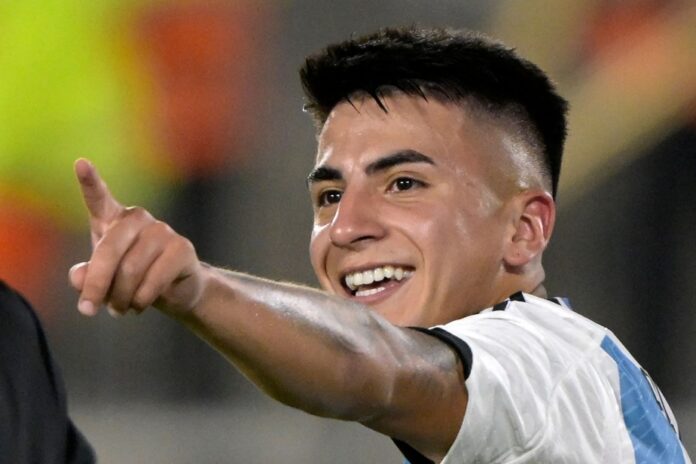(Sao Paulo) The era of Beckham or Henry is over: MLS, once fond of stars at the end of their career, has changed its recruitment strategy and is now competing in Brazil for young South American pearls, after having supplanted the ex-flourishers Argentina and Mexico championships.
The new recruits of the championship launched in 1996 are now South American, young, talented, supposed to raise the level of Major League Soccer and can above all generate great added value in Europe.
The three big leagues in Latin America took on this business before the ambition of the MLS franchises “to make the American league one of the biggest in the world”, indicates to AFP Alfonso Mondelo, director of competitions of the championship. .
Since 2021, the North American league has been the biggest transfer spender on the continent, according to an AFP analysis of FIFA reports from 2018 to 2022.
Last season, MLS paid out $181.5 million in transfers, more than twice as much as Argentina and Mexico, and $1.6 million more than Brazil.
In February 2022, Atlanta United paid Velez Sarsfield (Argentina) a record $16 million for Thiago Almada, then just 20 years old Argentina international and the first MLS player to win a World Cup.
If the international record of American clubs is derisory (three Concacaf championship titles – North America, Central America and the Caribbean – against 37 for Mexico and six for Costa Rica), the value of the squads of the 29 MLS teams (1, 25 billion USD) is close to that of the 20 teams of the Brazilian first division (1.45 billion USD).
And far ahead of Mexico’s 18 (US$880.5 million) and Argentina’s 28 (US$852 million), according to Transfermarkt.
“The United States, in terms of market value, will end up in first place because they know how to do good business” and “are developing in the right way,” said Brazilian agent Marcelo Mascagni.
Brazil is still ultra-dominant in Conmebol, the Confederation of South America, with the last four Copa Libertadores (equivalent to the European Champions League) won by Flamengo and Palmeiras.
Despite the crises, the country continues to provide the world’s largest contingent of players. It also makes the biggest profits in terms of transfers in America, with in 2022, 998 players sold for 267.2 million dollars, far more than Argentina (146.6 million) and the United States (135.2 million), according to FIFA.
But these sales brought in 30% less than in 2018, with 166 additional transactions.
This “is due to the disorganization of the clubs”, which “sometimes do not measure the opportune moment of the sale”, and to European clubs which buy younger, therefore cheaper, promising Brazilian players, according to Marcelo Mascagni.
The economic crisis of the great Argentine rival is reflected in the market for the world’s second largest supplier of players (1004, almost half the number of Brazilians, according to FIFA).
Its players now opt for Brazil or the United States. Consequence: an increase in the average age of players, from 24 years in 2018 to 26.7 years today.
“Argentina is not an attractive market”, except for the locomotives River Plate and Boca Juniors, believes Jaime Rascon, a marketing specialist who worked for Club America (Mexico) and Barcelona (Spain).
Clubs that used to supply Argentina are turning away after legal disputes over non-payments.
If in 2008 James Rodriguez had joined Banfield (ARG) before landing in Europe, the last Colombian pearl, striker Jhon Duran, 19, chose the Chicago Fire (USA) which registered 15 million euros of capital gain on resale to Aston Villa (ENG).
But the Argentine clubs send their national nuggets directly to Europe, such as River Plate with Enzo Fernandez (44 million euros to Benfica, sold 121 million euros to Chelsea) and Julian Alvarez (23 million euros to Manchester City) .
Mexico, once famous for its disproportionate recruitment and fabulous salaries, is also on the decline.
“There is a league agreement to reduce the payroll of the teams” and “reduce the quota of foreigners”, explains Jaime Rascon.
Over the past five years, the transfer market has been declining in both purchases (-37%) and sales (-50%). “This market, which was always looking for Brazilian players, disappeared” for Marcelo Mascagni.















